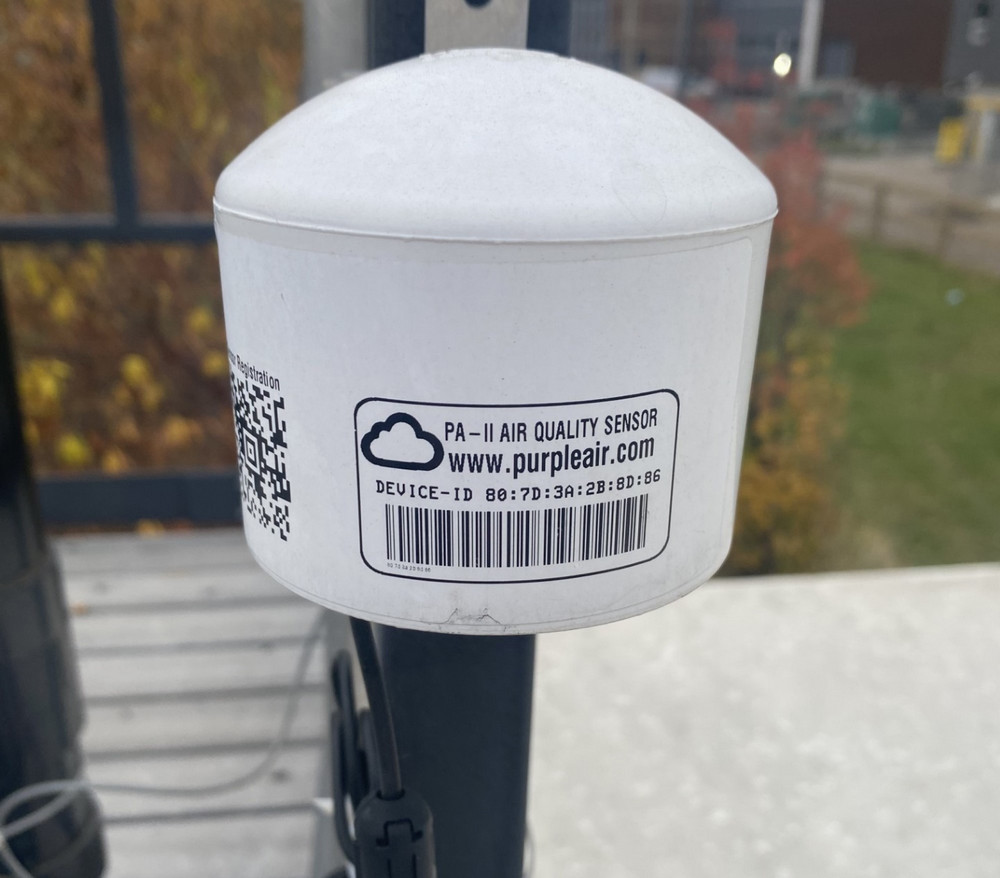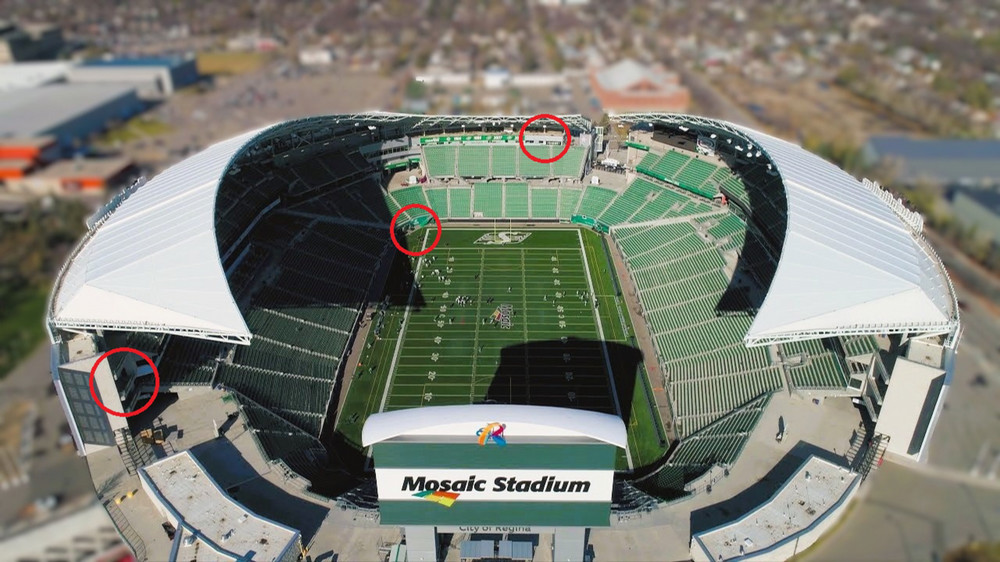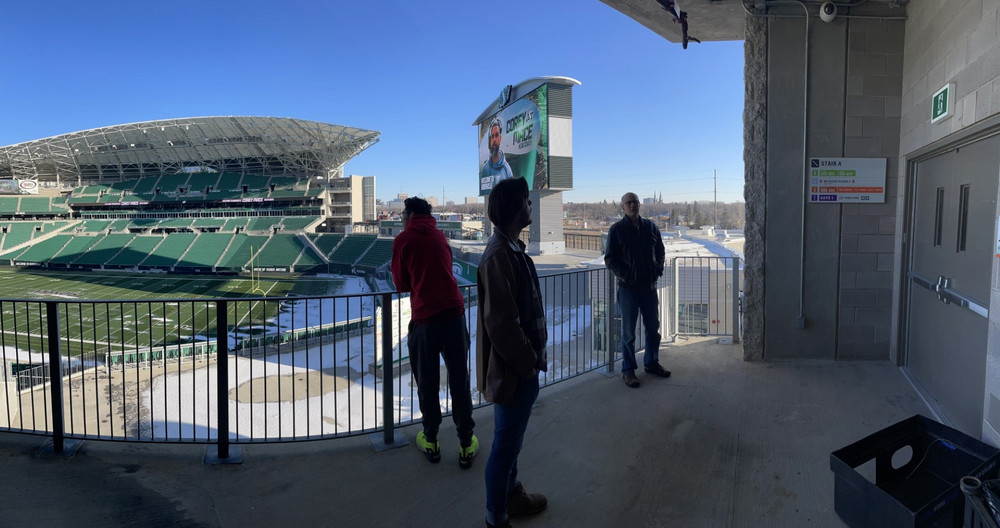During the 2023 Labour Day Classic football game, Regina's air was thick, not just with anticipation, but with smoke. The Air Quality Health Index (AQHI) rose to hazardous levels, leading officials to confront a serious challenge. While the game between the Saskatchewan Roughriders and the Winnipeg Blue Bombers proceeded, the decision to allow athletes to compete with an AQHI of 7 or higher raised a critical question: was the air truly safe for players and fans, and how could they know for sure?
The spark
While football fans watched the game, the project's real spark came from a call to action behind the scenes. Following a request from the CFL Players’ Association to better protect players from dangerous levels of fine-particle pollution (PM2.5), Saskatchewan Roughriders and Mosaic Stadium began searching for a predictive solution. The challenge was embraced by Jacob Stewart, BASc ‘24, then an environmental systems engineering student at the University of Regina, as part of his capstone project. He felt inspired to find a better way of predicting when the smoke levels are unsafe for teams and their fans.
Building the AI model

Picture of PurpleAir PM2.5 sensor that uses AI Model developed by Jacob Stewart and Doug MacDonald. Photo credit: Dr. Kevin McCullum
First, the team built a short‑term forecasting AI model using the programming language Python—cleaning and combining historical weather and open‑source air‑quality data—then tested approaches to finetune the model.
With the model in place, they installed air‑quality monitors around Mosaic Stadium in order to capture live data to feed into the AI model. The PurpleAir monitors are positioned to capture field‑level and public area conditions while avoiding interference from exhaust vents and food grills. Using the current conditions, the system produces predictions including the next 3, 6, 12, and 24 hours. During the test stage, the predictions proved to be 98% accurate. Once the U of R Faculty of Kinesiology and Health Studies heard about the success of the project, they added a monitor to the campus playing field.

Aerial view of Mosaic Stadium with three circled locations for air-quality sensors. Photo credit: Libitron Aerial.
I look for possibilities and ways of getting the data I need to perform work in the real world that helps people. — Jacob Stewart, Alum, Faculty of Engineering & Applied Science, University of Regina
Why it matters
Dr. Kevin McCullum is a sessional lecturer in the Faculty of Engineering & Applied Science, at the U of R. He says, “capstone projects like this push students to connect technical knowledge with community needs.”
Early, credible forecasts buy time. For families with asthma, older adults, athletes, and game-day crews, hours of notice mean better planning and less last-minute scramble. When forecasts flag poor air, operations can shift warm-ups, post timely updates, and have masks ready for those who need them. The work that started at U of R has since inspired similar other CFL teams to set up similar monitoring systems—a practical win for operations and public safety.

Jacob Stewart (Left) and Doug McDonald (Right), Alumni, Faculty of Engineering & Applied Science, U of R. Photo credit: Dr. Kevin McCullum
The capstone project produced results beyond the lab and the stadium. Before graduating, Stewart had a job offer based on his experiential learning experience and the skills he was already demonstrating such as data cleaning and model building.
“Strong faculty-industry collaboration means students own the full eight-month project end-to-end and develop the professional-level skills employers are looking for—while delivering real benefits to our local community,” —Dr. Peng Wu, Program Chair, Faculty of Engineering & Applied Science, University of Regina.
Project impact

Jacob Stewart at Mosaic stadium, inspecting the placement site of an air quality measurement monitor. Photo credit: Dr. Kevin McCullum
The air quality AI model Stewart and MacDonald developed at the U of R is impacting public safety policy near and far. It is now used by the provincial ministries in Alberta and British Columbia, as well as the United States Environmental Protection Agency (EPA) Environment. For Stewart, he plans to continue applying the same approach going forward: be inspired by a real problem, design it well, and let the data lead.
If you attend a Rams football game, women’s Cougars soccer game, or Saskatchewan Roughriders game, know you can rely on smoke detection at work. Speaking of sporting events, remember to join USPORTS, the U of R, and the City of Regina when the 2025 Vanier Cup takes center stage at Mosaic Stadium on Saturday, November 22, 2025.
Interested in hands‑on engineering that solves real-world challenges and serves your community? Explore programs in the Faculty of Engineering & Applied Science at the University of Regina today.
Banner Photo: A five-panel photo collage telling the story of the U of R's air quality monitoring project, including images of alumnus Jacob Stewart, the sensor placement at Mosaic Stadium, and a map showing the continental scale of air quality monitoring. Photo credit: Dr. Kevin McCullum.
About the University of Regina
At the University of Regina, we believe the best way to learn is through access to world-class professors, research, and experiential learning. We are committed to the health and well-being of our more than 17, 200 students and support a dynamic research community focused on evidence-based solutions to today’s most pressing challenges. Located on Treaties 4 and 6—the territories of the nêhiyawak, Anihšināpēk, Dakota, Lakota, and Nakoda peoples, and the homeland of the Michif/Métis nation —we honour our ongoing relationships with Indigenous communities and remain committed to the path of reconciliation. Our vibrant alumni community is close to 95,000 strong and enriching communities in Saskatchewan and around the globe.
Let’s go far, together.
